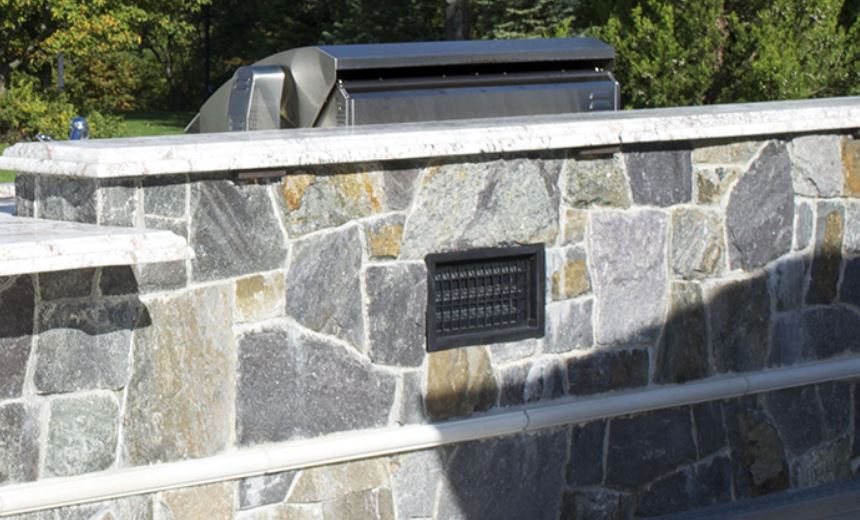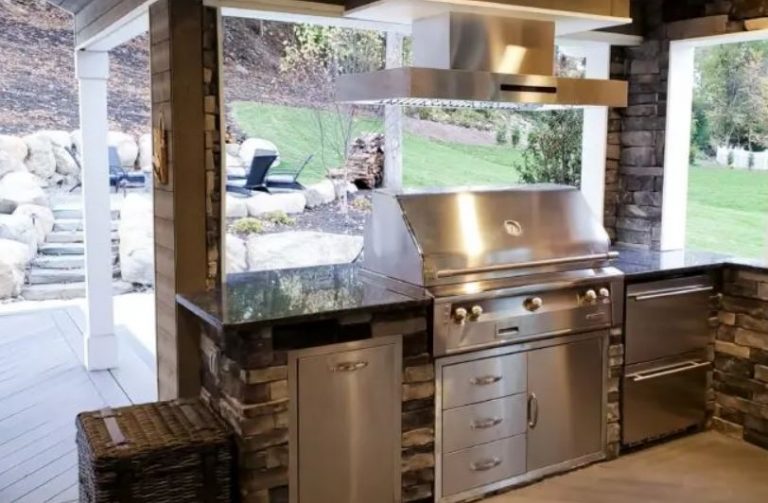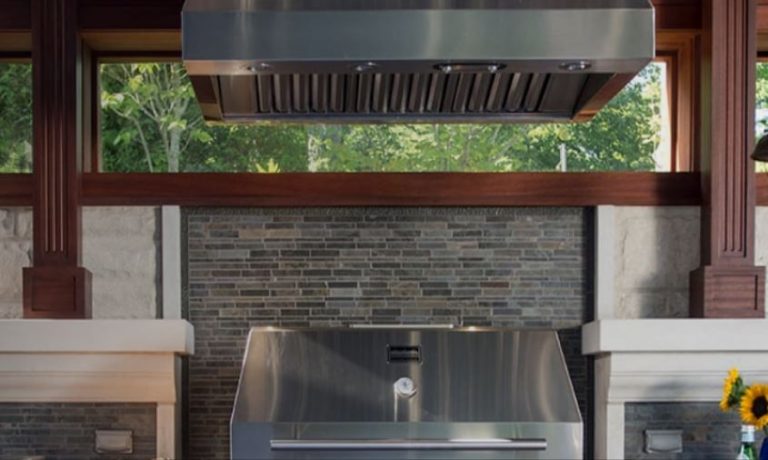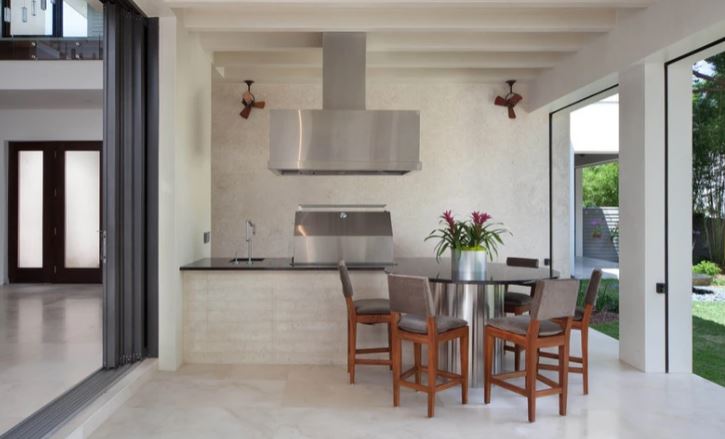Does an Outdoor Kitchen Need a Vent?
Do You Need a Vent in an Outdoor Kitchen?
Over the last decade, outdoor kitchens have become increasingly common. People are becoming more inventive with their outdoor kitchen designs and grilling delicious foods, but construction codes with regards to using a barbecue grill have not kept pace with the current trends. There will always be hidden dangers, even if you follow common sense rules on how to make your outdoor cooking with builtin grills as safe as possible. The failure to vent is one of the most common mistakes made when constructing an outdoor kitchen with a bbq grill.
Inadequately designed BBQ islands are causing an alarming trend in safety-related mishaps. In each case, simple venting of the outdoor grill island may have prevented the accidents.
(Looking for information on choosing an outdoor vent hood? A vent hood is a must have for most outdoor kitchens to protect your investment.)
What’s the point of venting?
Air ventilation systems must be installed on all outdoor kitchen islands. The explanation is simple: without vents, your outdoor kitchen or kitchen island is more likely to become an outdoor kitchen danger. If propane tanks happen to leak inside the island and there are no vents to allow the gas to escape, the gas will be trapped permanently, which is obviously not ideal. You might think this is self-evident, yet you’d be amazed how often it goes unnoticed.
The type of gas used by your barbecue grill is also taken into consideration. Because natural gas (NG) rises and heavier propane gas (LP) sinks, the vents on your grill should be spaced as high as possible if you use NG. Vents for LP grills should be placed low to the ground. Every 4 to 6 feet along the island, vents should be installed either high or low depending on the type gas you use in your outdoor grill.
What would cause gas to “build up” ?
When you turn on a gas valve but don’t light the burner on gas grills, the gas will continue to flow out of the unlit burner and build up in your structure. Rusty gas pipes can develop microscopic pinholes, allowing gas to leak into the structure. We’ve also seen structures with sunken spaces within for plumbing and other purposes, which can allow collected gas to “pool.”
When it comes to creating an outdoor kitchen in an outdoor living space, there are currently no specific standards that address venting. When you mix a neglected BBQ, an accumulation of excess garbage, grease, and carbonized food particles, and an outdoor kitchen structure that hasn’t been ventilated, you have a nightmarish predicament. You can envision the horrific possibilities that could play out if the debris catches fire and gas has gathered under the BBQ.
What is the best way to vent an outdoor kitchen?
Any gas appliance in your BBQ grill island will require vent panels.
This is dependent on the type of gas grills being used. We recommend venting natural gas high up in your construction so that rising gas can escape. We recommend venting propane gas as close to the ground as possible to allow the sinking propane gas to escape freely.
Many companies that might sell a barbeque grill and outdoor kitchen items will have vents available for you to install in builtin grills islands and cabinetry. Stainless steel vents are reasonably priced.
Experts advocate installing vented cabinet doors or multiple vents in outdoor kitchens to produce a cross-flow of air. These should be planned for in your outdoor kitchen design.
What About Making Your Own Vents?
To allow the gas to escape, several folks try to make a screen out of mesh or leave “weep holes” in their island structures. Animals and insects will find these holes and jury-rigged vents and construct nests in them, which is a concern.
Ventilation of your outdoor island construction is required and should be treated seriously. You are placing yourself, as well as anyone else who may be operating your grill or in your outdoor living space, in danger if you do not do so. Remember to vent high/low (depending on the type of gas) and frequently!




